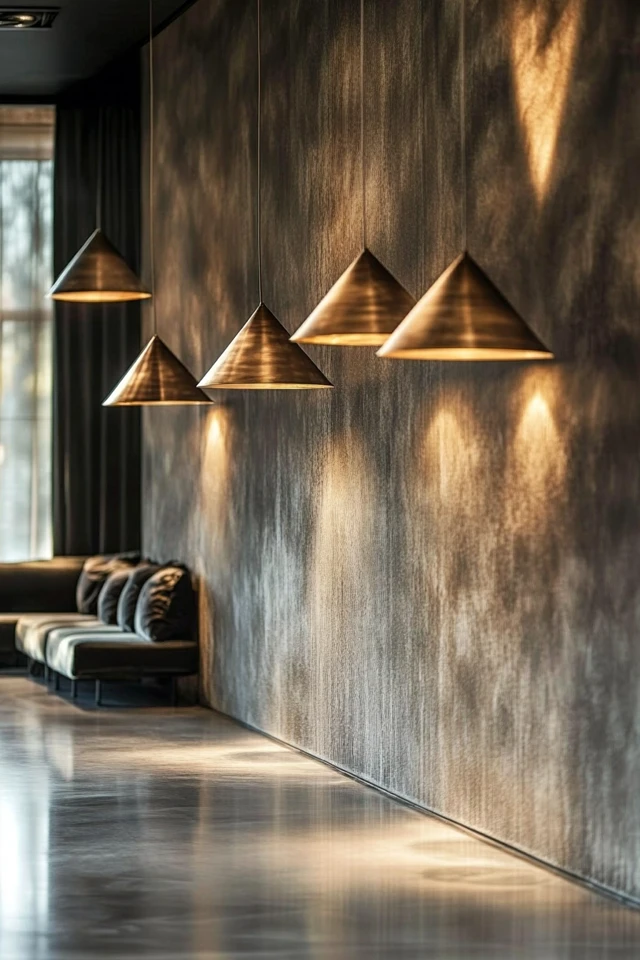Lighting is one of the most transformative elements in interior design. It has the power to create ambiance, define spaces, and highlight architectural features. But achieving a well-lit home isn’t just about flipping on a light switch—it’s about strategically layering light to create depth, functionality, and warmth.
The first time I truly appreciated the art of layered lighting was during a dining room redesign. The room initially had only a single overhead fixture, making the space feel flat and uninviting. By adding wall sconces for ambiance, a dimmable chandelier for drama, and a table lamp in the corner for accent, the transformation was incredible. Suddenly, the room had personality, functionality, and a cozy glow that felt just right at every time of day.
In this guide, I’ll share how to add layers of light to your home decor so you can create a balanced, beautiful, and functional lighting scheme.
Why Layered Lighting Matters
Layered lighting involves combining multiple light sources at different levels to achieve a harmonious balance of illumination.
Benefits of Layered Lighting:
- Creates Depth: Adds dimension and visual interest to a room.
- Improves Functionality: Ensures each area has the right amount of light for its purpose.
- Sets the Mood: Allows you to control the ambiance for various activities.
- Highlights Features: Accentuates architectural details, art, or decor.
The Three Layers of Light
To create a well-lit space, incorporate these three layers of lighting:
1. Ambient Lighting (General Light)
Ambient lighting provides overall illumination, ensuring the room is evenly lit.
- Examples: Overhead chandeliers, recessed lighting, ceiling-mounted fixtures.
- Purpose: Acts as the foundation of your lighting scheme.
Pro Tip: Use dimmable fixtures to control the intensity of ambient lighting based on the time of day or activity.
2. Task Lighting
Task lighting provides focused light for specific activities, such as reading, cooking, or working.
- Examples: Desk lamps, under-cabinet lights, reading sconces.
- Purpose: Enhances visibility for tasks that require precision.
Pro Tip: Position task lighting where you need it most, and choose adjustable fixtures for flexibility.
3. Accent Lighting (Decorative Light)
Accent lighting adds drama and highlights specific elements in a room.
- Examples: Wall sconces, picture lights, LED strip lights, spotlights.
- Purpose: Draws attention to art, architectural details, or focal points.
Pro Tip: Use accent lighting sparingly to avoid overwhelming the space.
Step-by-Step Guide to Adding Layers of Light
1. Evaluate Your Space
Start by assessing the room’s function and layout. Consider:
- How is the room used?
- What areas need the most light?
- Are there architectural features or decor you want to highlight?
Example: In a living room, you’ll need ambient light for general use, task lighting near seating areas for reading, and accent lighting to highlight art or a fireplace.
2. Start with Ambient Lighting
Choose a main light source to act as the room’s foundation.
- Options: Chandeliers, flush-mount fixtures, recessed lighting.
- Tips:
- Use warm bulbs (2700K–3000K) for a cozy atmosphere.
- Add dimmer switches for flexibility in light levels.
Pro Tip: If you have a high ceiling, consider a statement chandelier to draw the eye upward and add elegance.
3. Add Task Lighting
Incorporate lighting that supports specific activities.
- Examples:
- Living Room: Floor or table lamps near seating for reading.
- Kitchen: Under-cabinet lighting for food prep.
- Bedroom: Bedside lamps or sconces for nighttime reading.
Pro Tip: Task lights should be adjustable or focusable for precise illumination.
4. Use Accent Lighting to Highlight Features
Layer in accent lighting to bring character and depth to the room.
- Ideas:
- Use picture lights to illuminate artwork.
- Add LED strip lights under shelves or cabinets to create a soft glow.
- Highlight textured walls or architectural details with spotlights.
Pro Tip: Position accent lights at an angle to avoid glare and create flattering shadows.
5. Balance the Layers
Ensure your lighting layers work together seamlessly.
- Avoid overlighting by using dimmers to control intensity.
- Mix light sources with varying heights, such as ceiling lights, wall lights, and table lamps.
- Choose fixtures that complement your decor style for a cohesive look.
Pro Tip: Test your lighting during different times of the day to make sure it feels balanced and functional.
Picture Gallery
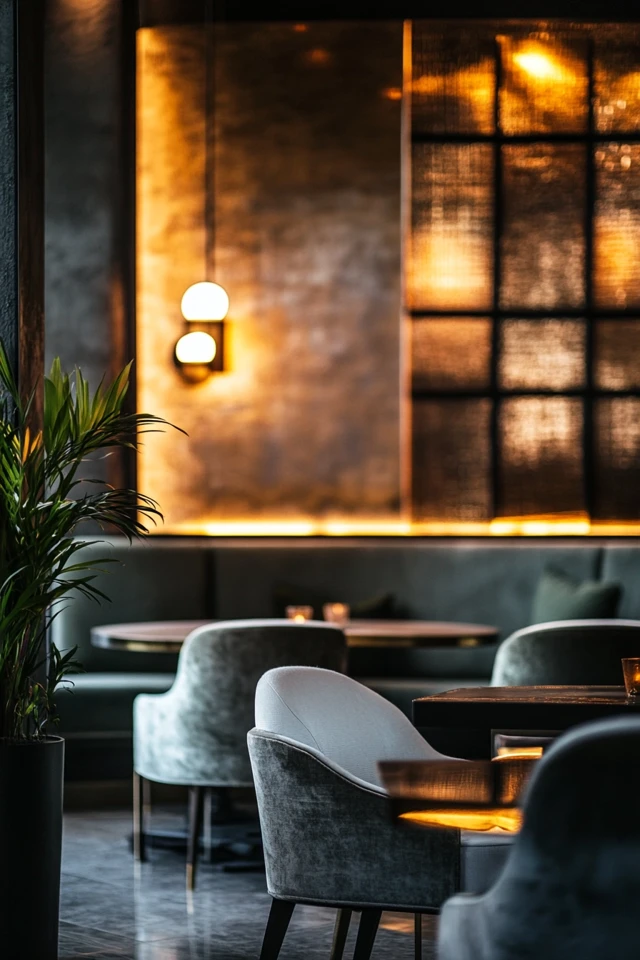

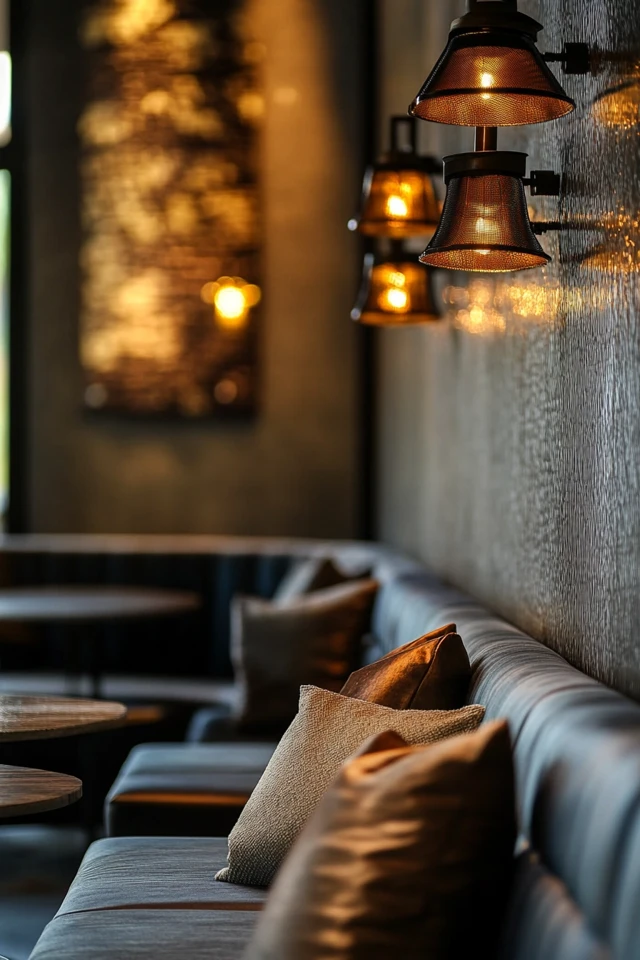
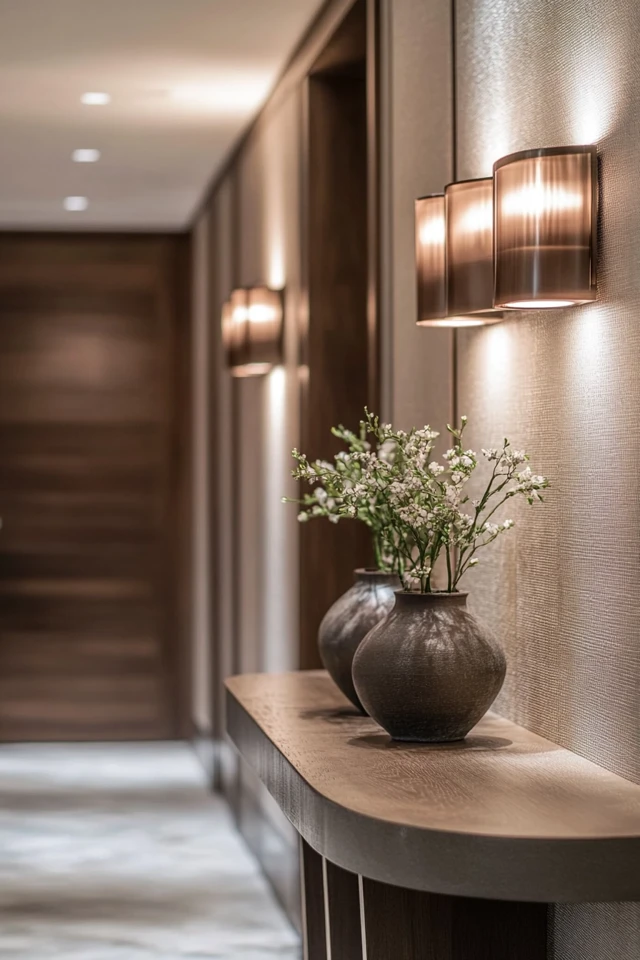
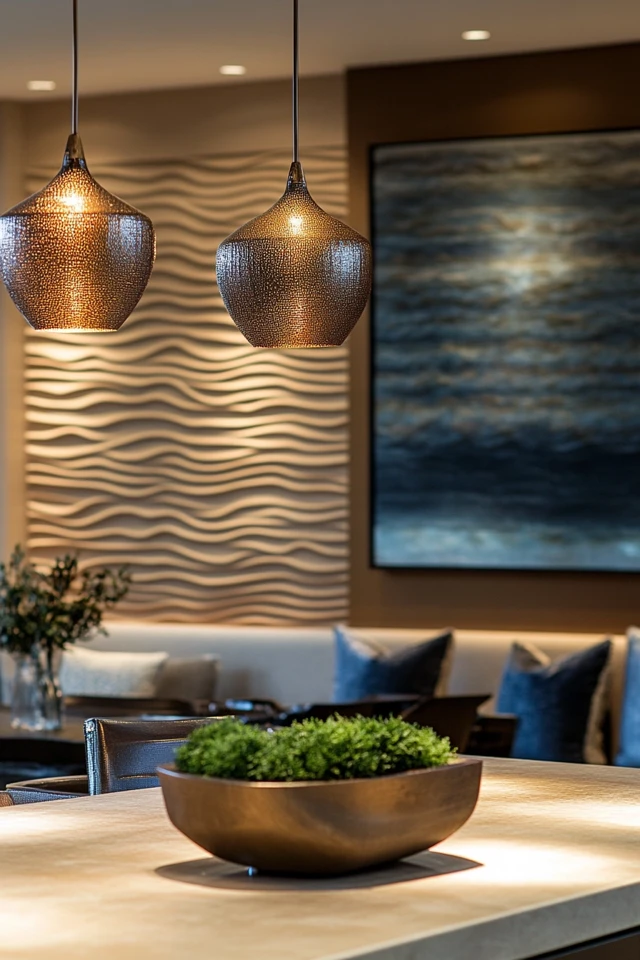
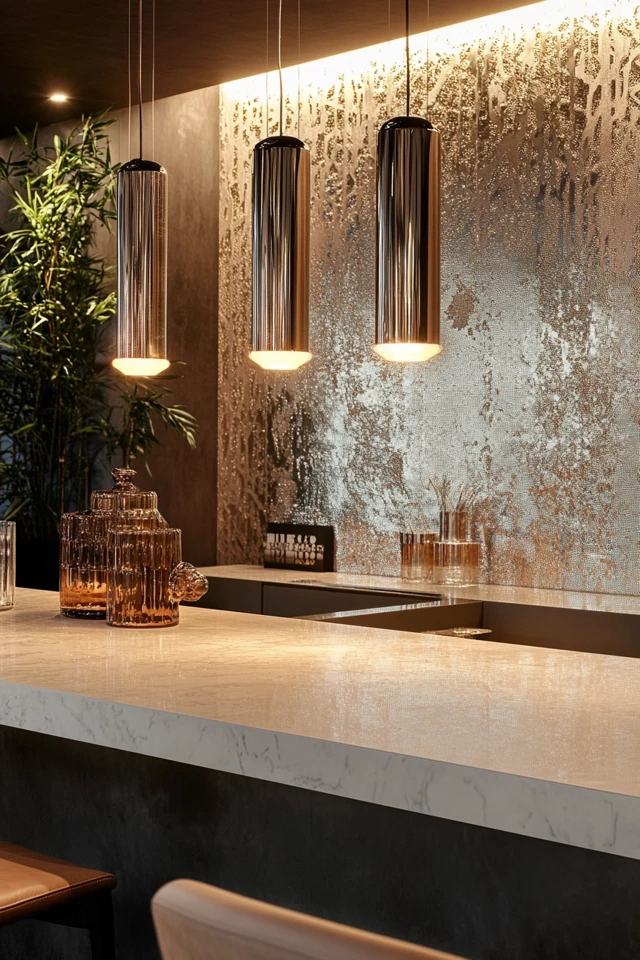
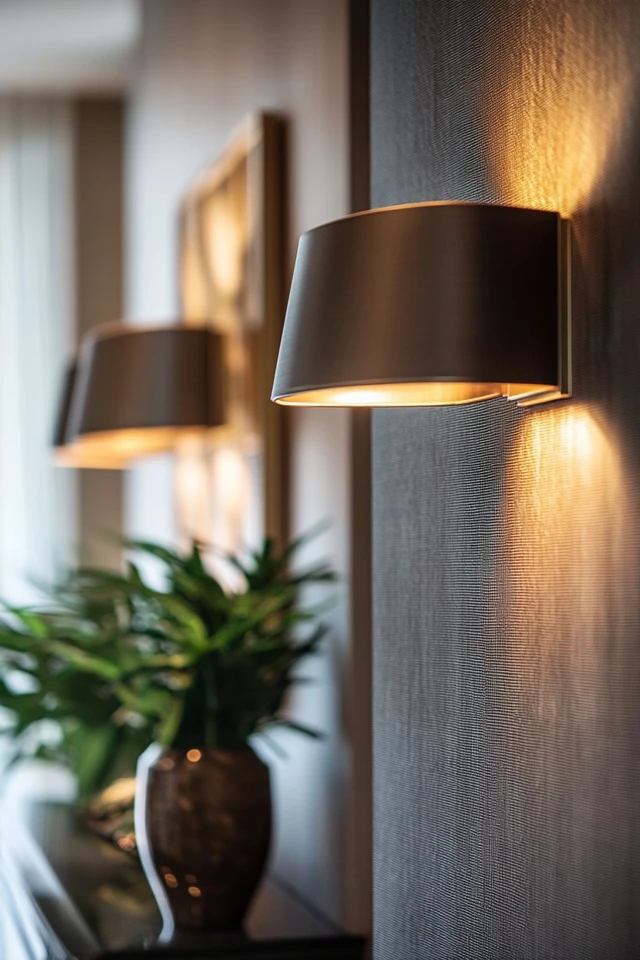
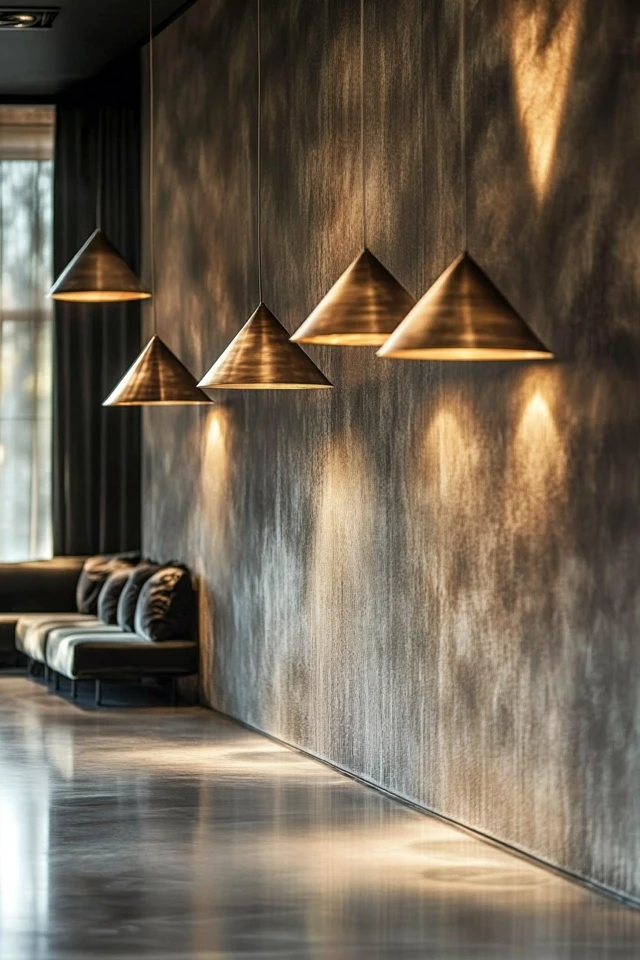
Tips for Perfecting Layered Lighting
1. Mix Light Temperatures
- Use warm light (2700K–3000K) for cozy spaces like bedrooms and living rooms.
- Opt for cooler light (3500K–4000K) for work areas like kitchens and offices.
2. Incorporate Dimmers
- Dimmers allow you to adjust the brightness of ambient and accent lighting, making it easy to change the mood.
3. Avoid Glare
- Use diffusers, frosted glass, or shaded fixtures to soften light and reduce harsh glare.
4. Experiment with Fixtures
- Combine different styles, such as industrial sconces, modern chandeliers, and vintage table lamps, to add personality.
5. Use Smart Lighting
- Install smart bulbs or systems that let you control lighting levels, colors, and schedules via an app or voice command.
Conclusion
Layering light is an art that transforms your home into a functional and inviting sanctuary. By combining ambient, task, and accent lighting, you can create a space that’s beautifully illuminated for every occasion. Whether you’re relaxing in the living room, cooking in the kitchen, or unwinding in the bedroom, a thoughtfully layered lighting scheme will enhance your home’s atmosphere and your daily life.
So, let your creativity shine, and start layering light to make your home truly glow.
FAQs
1. How many light sources should each room have?
Aim for at least three light sources per room—one for ambient light, one for task lighting, and one for accent lighting.
2. What’s the best way to layer lighting in a small room?
Use multi-functional fixtures like wall sconces with adjustable arms and combine them with a central ambient light. Keep the scale of fixtures proportional to the space.
3. Can I use only accent lighting in a room?
While accent lighting can add drama, it’s not sufficient as the sole light source. Combine it with ambient lighting to ensure the space is functional and balanced.
4. What type of bulbs should I use for layering light?
Use LED bulbs for energy efficiency and longevity. Opt for warm light (2700K–3000K) for most spaces and cooler light (3500K–4000K) for work areas.
5. How do I highlight artwork with lighting?
Use picture lights or directional spotlights positioned at a 30-degree angle to avoid glare and evenly illuminate the artwork.

